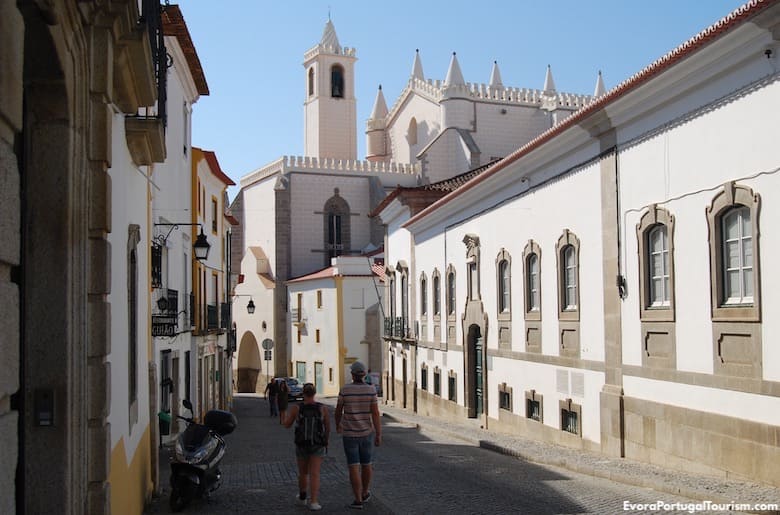
Walking around the World Heritage center of Évora, you find monuments from different periods in history, but mostly from the 15th century.
Évora has a variety of monuments, almost all of them inside the city’s wall. The wall dates back to Roman times and was rebuilt by the Visigoths and the Moors, and again in the 1300s. It has a perimeter of 3km (close to 2 miles), and had ten gateways, but one of them closed and new towers were added in the 17th century. One of these towers is the entrance to the old city when you walk from the bus station.
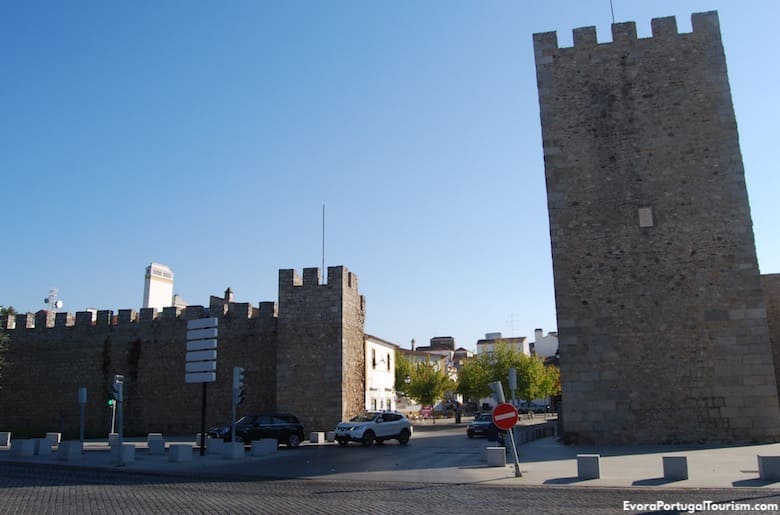
The towers and entrance to the walled city of Évora, down the road from the bus station.
The oldest attractions are from Roman Évora (a temple and baths), but this is essentially a well-preserved 15th-century city. It’s filled with interesting architectural details, best enjoyed on a walk around the cobbled lanes of the World Heritage center, which is a charming open-air museum.
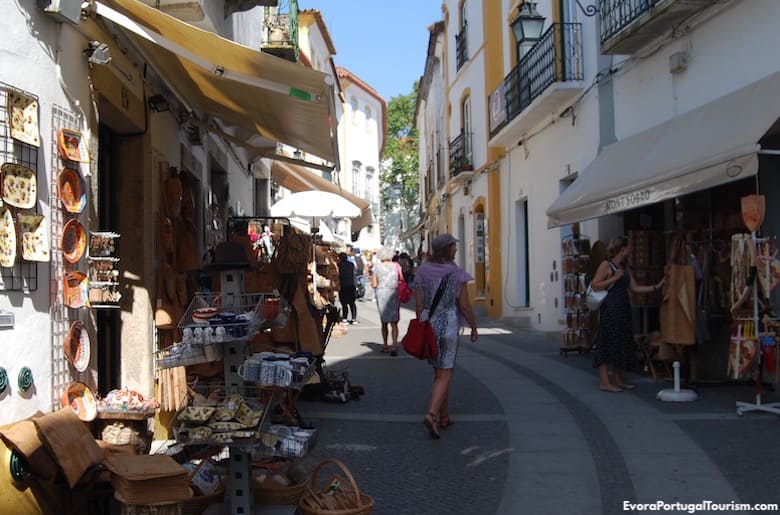
Rua 5 de Outubro is one of Évora's main pedestrian streets
The main streets are Rua 5 de Outubro (which goes from the main square to the cathedral and the Roman temple) and Rua João de Deus (the pedestrianized shopping street, behind the main square). That main square is Praça de Giraldo, home to the tourist office and one of the city’s main churches, Igreja de Santo Antão.
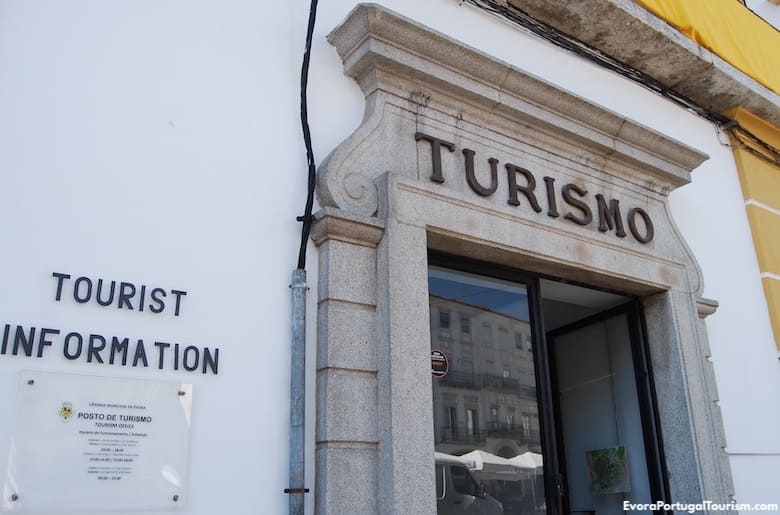
The tourist office in the main square, Praça de Giraldo.
The winding streets also lead to one of Portugal’s oldest universities (Évora University) and to the city’s most memorable sight, the Chapel of Bones, that’s part of a royal church, considered one of the finest examples of Gothic and Manueline (Portuguese Gothic) architecture.
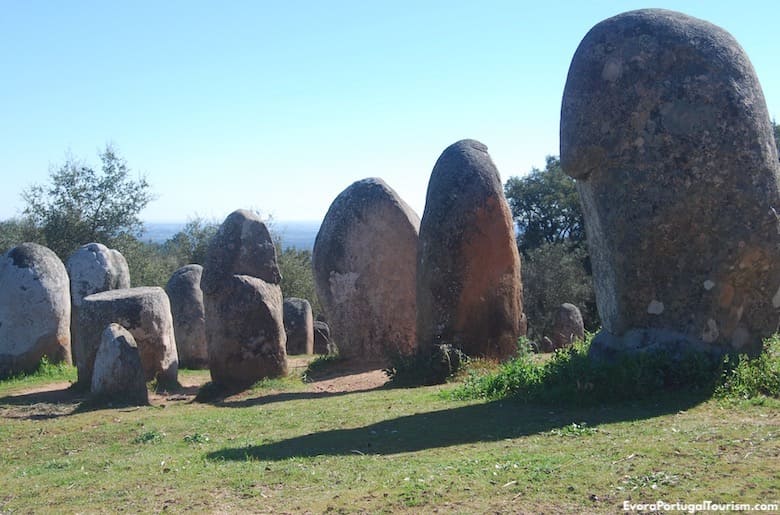
The stone circle of Almendres is one of a number of prehistoric monuments around Évora
Around the city is an extraordinary concentration of prehistoric monuments -- dolmens (megalithic tombs with a large flat stone laid on upright ones), menhirs (tall upright stones) and cromlechs (stone circles). Dolmens are mostly found in Britain, France, and Portugal, and the one in Zambujeiro is the largest of them all. If you visit just one prehistoric monument, however, make it the Cromlech of Almendres, the stone circle that’s often called the “Portuguese Stonehenge.”
For the megalithic sites outside the city you’ll need a car, but you can walk everywhere in the center.